Let the centuries fall away and picture the scene: a scribe sits hunched over his desk. A cat, one of many quick-clawed rat catchers in the monastery, snoozes on his lap. It is December, and cold, and night is falling. The scribe rises to his feet. Why? To fetch another candle perhaps. Maybe in search of a penknife to sharpen his quill, or to stretch his shoulders, which ache from the endless hours of silent work. The cat, outraged, leaps on to the desk and strolls across the freshly inked page.
While the most famous scribe’s cat must be Pangur Bán, immortalised in poetry by a ninth-century Irish monk in the Benedictine monastery of Reichenau Abbey, in Germany (“Hunting mice is his delight/ Hunting words I sit all night”), it’s nice to think that the nameless pet that left its prints on the Honorius Augustodunensis also has two paws in the door of fame.
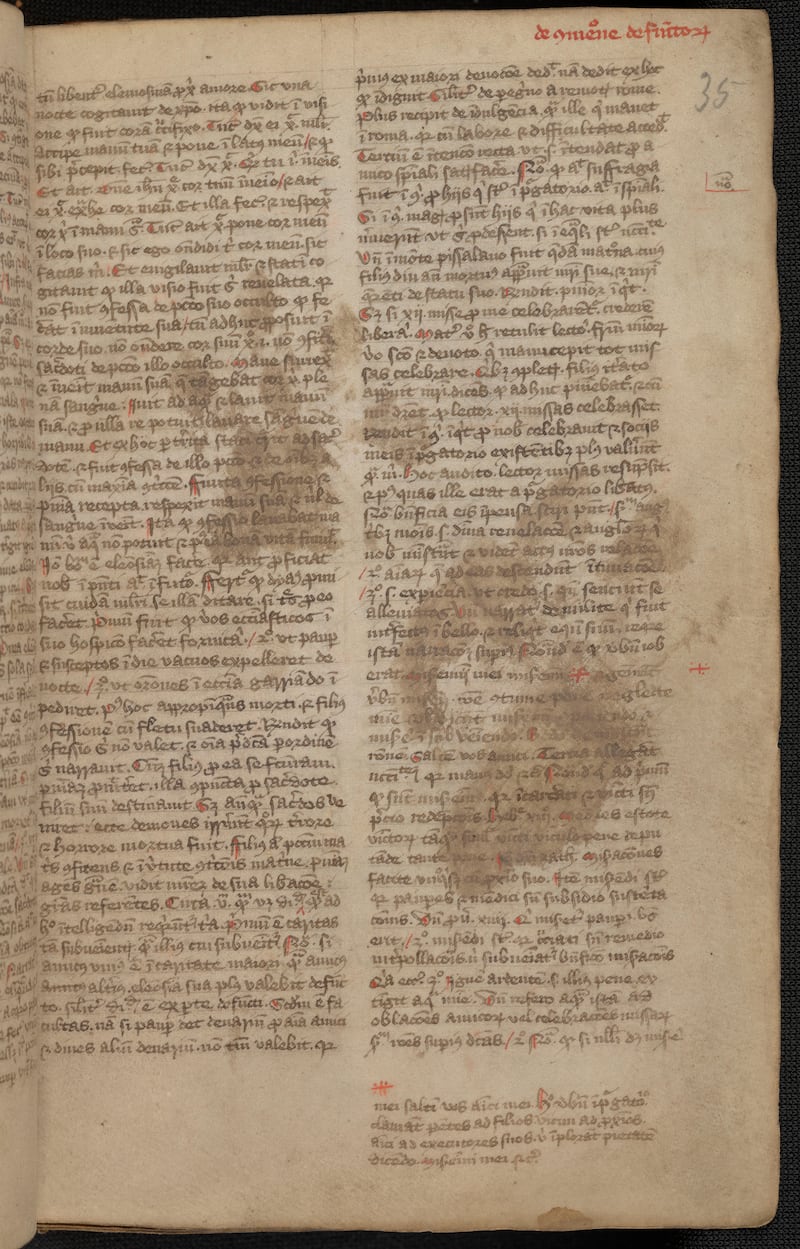
Honorius Augustodunensis is a 15th-century compilation of texts originally written for teaching in an Irish Franciscan priory, generally believed to be St Saviour’s in Limerick. Complete with paw-print graffiti, it is one of 60 medieval texts now available online, thanks to Trinity College Dublin’s Manuscripts for Medieval Studies Project. Announced in 2021 as part of Virtual Trinity Library, and with the support of the Carnegie Corporation of New York, the project set out to research, catalogue, conserve, digitise and share a range of manuscripts of international research significance. Selected works included Bibles, Books of Hours, chronicles, histories, psalters and manuscripts with musical notation. Before now this material was available only to students on the university’s MPhil in medieval studies course. Now the Manuscripts for Medieval Studies Project on Trinity’s website means everyone online can explore this incredible array of skill and artistry.
The library had wanted for some time to scale up its digitisation and do more on the unique pieces in its research collections. “We started out initially with 16 manuscripts that we were going to catalogue, conserve, research, blog about and share,” says Estelle Gittins, who is the manuscripts curator. “Two years later we’ve done about 60 manuscripts and fragments. That’s just over 16,000 individually digitised pages of text, artwork, doodles.” Two of the library’s most significant and highly decorated manuscripts, the 12th-century Winchcombe Psalter and Matthew Paris’s Book of St Albans, have been photographed in their entirety in colour for the first time. All 60 show how vital the library’s collections are to the study of the art, history, culture, language and literature of the medieval period. The different materials used help to fill in the story of the move from parchment (made from sheepskin) and vellum (calfskin) to paper.
READ MORE
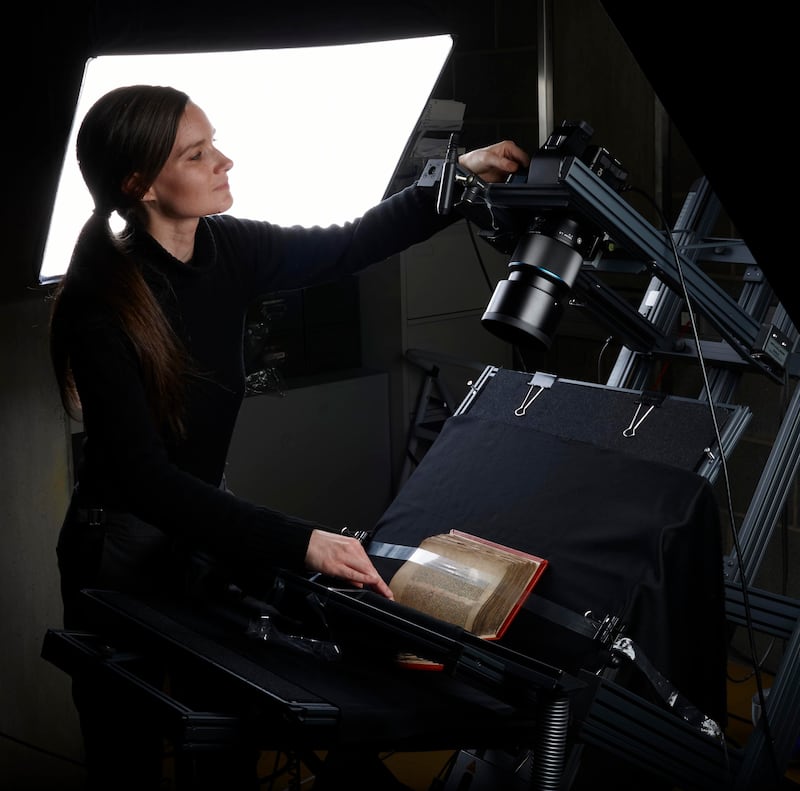
Each item chosen for the project was put through a full restoration check by Angelica Anchisi, the project’s conservator, before being photographed on a special cradle by senior digital photographer Caroline Harding. Photographing the Book of St Albans alone took a full week, Gittins says. “Virtually every illustration has some element of gold in it, which requires an advanced photography technique. They shot each one six times.”
This 13th-century masterpiece created by Paris, a Benedictine monk, Paris chronicles the life of St Alban, the first Christian martyr in England. Because it also depicts the construction of St Albans cathedral, what was ostensibly a religious text also becomes an insight into medieval life.
“It’s a snapshot of medieval building trades and tools,” Gittins says, pointing out a scene in which King Offa has showed up on site and is bossing the builders around. (Think Room to Improve but with tiny axes and rickety wheelbarrows). “Clothes were very, very simple. Britain was still hankering after the Roman period, so the design of clothes was very similar, whether you were rich or poor. But if you were rich you had great fabrics.” Offa is depicted with a crown and fancy embroidery on his tunic, while the builders are wearing plain hoods to protect them from the cold.
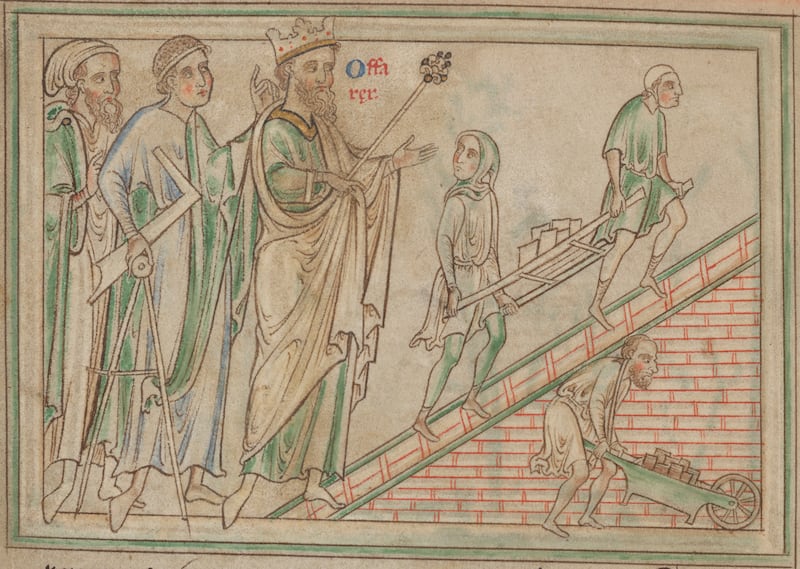
Such tantalising snippets of material culture also intrigue Gittins’s colleague Claire McNulty, a Carnegie postdoctoral research fellow. She describes the books as living objects, showing me a religious text from the 15th century in which blank space was later used to record recipes. These include a concoction to protect users from the plague (you’ll need walnuts and figs, for starters) and balms for “scurvy of the mouth” and “weakness of the back”.
Such additions create recognisable connections with previous owners of these precious volumes, McNulty says. “So much of the medieval period is hard to relate to, but then every now and again you come across something like this; people struggling with things we recognise.”
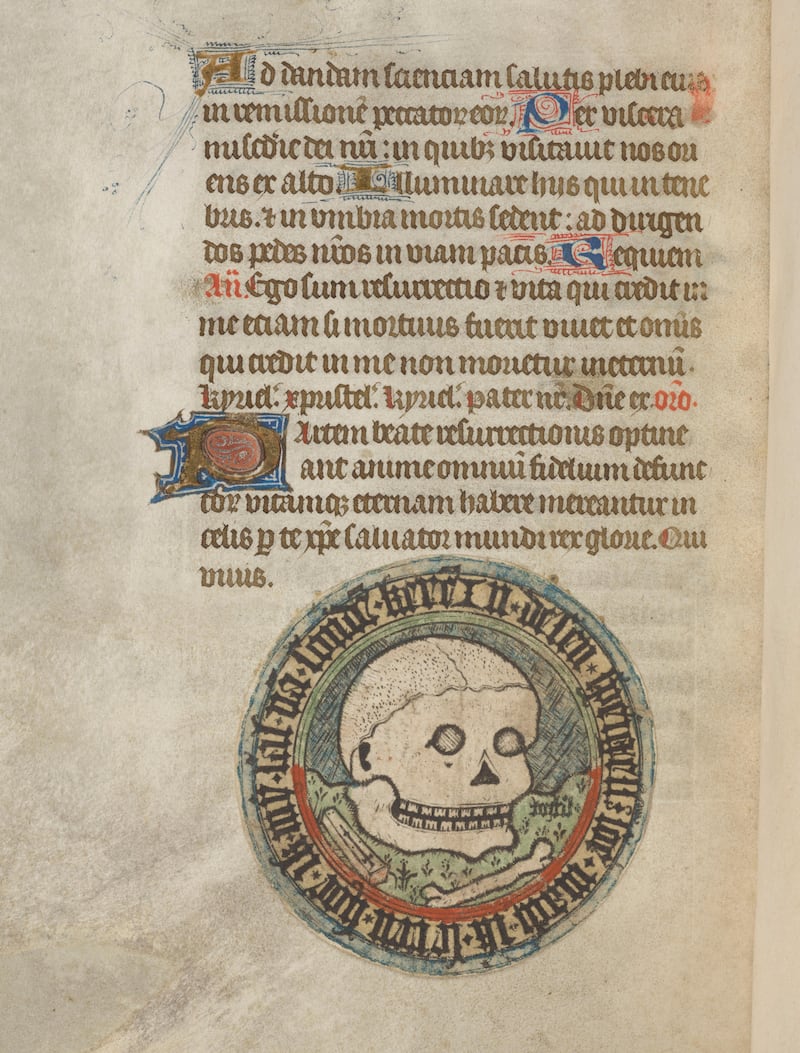
One of her favourites is a Book of Hours – an illustrated manuscript showing the times at which monks prayed – which dates from the second half of the 15th century and was added to Trinity’s library in 1802. This particular one is special for a number of reasons. Unusually, it has the curious addition of a grimacing skull, which was glued on years after the book was made.
“This is a vellum manuscript, as most of them are, and on the final folio here we have this memento mori, or remembrance to death. It’s a circular paper emblem attached to the vellum leaf. The inscription around the outside is in Dutch. It says, ‘In this mirror, so may I learn/ How from sin, I ought to turn.’”
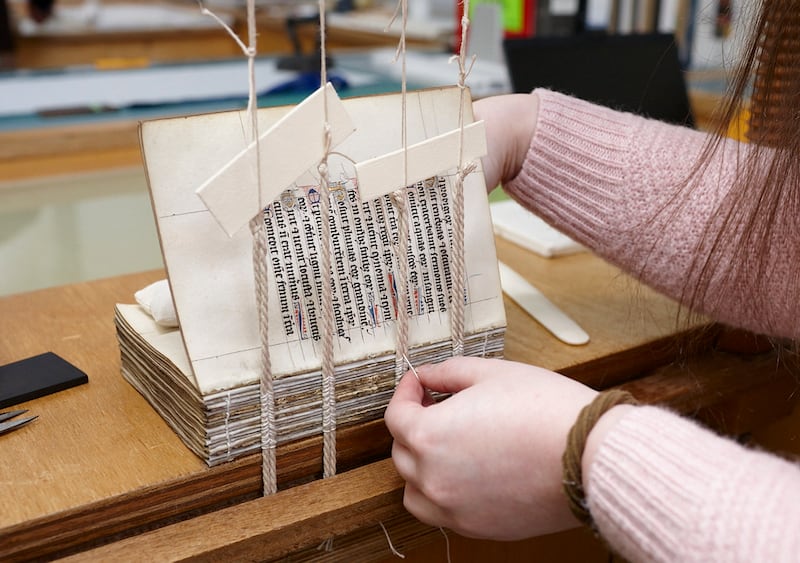
Equally noteworthy, this particular Book of Hours also has an owner’s name on it: Livina van Bronchorst. “With a lot of the manuscripts it’s very hard to know who owned them. We very rarely get an unbroken provenance.” Van Bronchorst’s ownership dates to the late 16th century or early 17th century, suggesting that the manuscript may have had just two owners before her.
The book is one of the 30,000 or so items in Trinity’s renowned Fagel Collection, which was assembled by five generations of a Dutch family, several of whom had served as greffier, or secretary of state. Finding himself stuck for cash when exiled to England during the Napoleonic Wars, Hendrik Fagel was forced to sell his family’s magnificent library. Christie’s produced an elaborate auction catalogue, but the auction itself never took place because the governors of the Erasmus Smith Schools in Dublin put in an early bid and snapped it up on behalf of Trinity.
That van Bronchorst decided to write her name in her book made research easier for scholars centuries later. Imagining the wonderful and varied lives and journeys these manuscripts have had is part of the joy of an archivist’s work, Gittins says.
“Part of the story we’re trying to tell with all of these books is that they survived the dissolution of the monasteries. They were created and kept very happily for a few hundred years, very safe in monasteries – universities of learning of their age. Then, when the disruption and dissolution of the monasteries happens, lots of books are lost, damaged, thrown away. But lots enter the market, and they find buyers.”
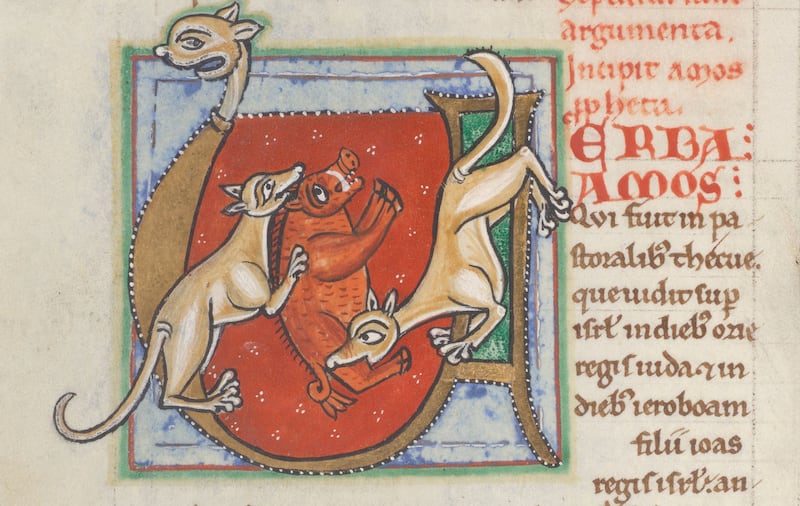

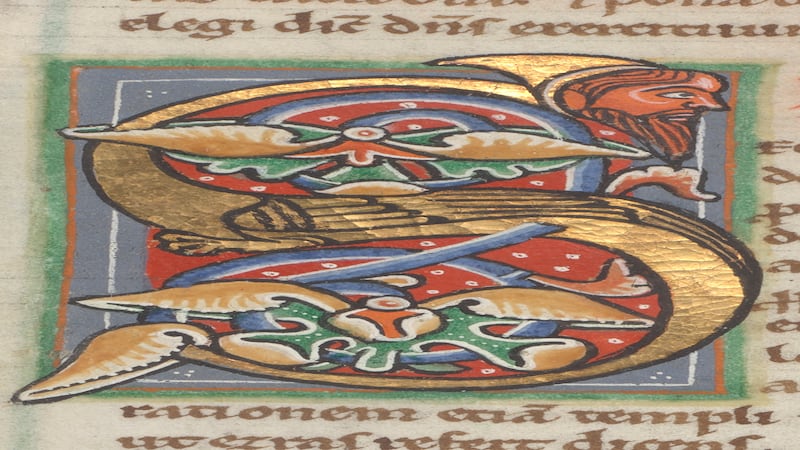
The Book of St Albans had such a journey, surviving the chaos and finding a safe home at Trinity in 1661, when it was already hundreds of years old. Little art from the era survives on church walls or in panel paintings, Gittins says. “What does survive is the art within the pages of manuscripts. And because the pages are quite often closed, and the light doesn’t get to them, the colours are amazing.” And they really are: vibrant palettes bring each manuscript’s illustrations soaring to life. The decorative eagles and animals, the imaginary sea monsters – despite being completely of their time, illustrations such as those in the 12th-century West Dereham Bible have a contemporary sensibility.
Trinity is synonymous with the Book of Kells, yet that is just one of more than 600 medieval manuscripts in its collections. For all their artistry and beautiful craftsmanship, the 60 pieces in the Manuscripts for Medieval Studies Project provide more than just a taster of these riches. They offer tantalising glimpses into the lives of many long-gone humans, both named and unknown. And their cats.



















